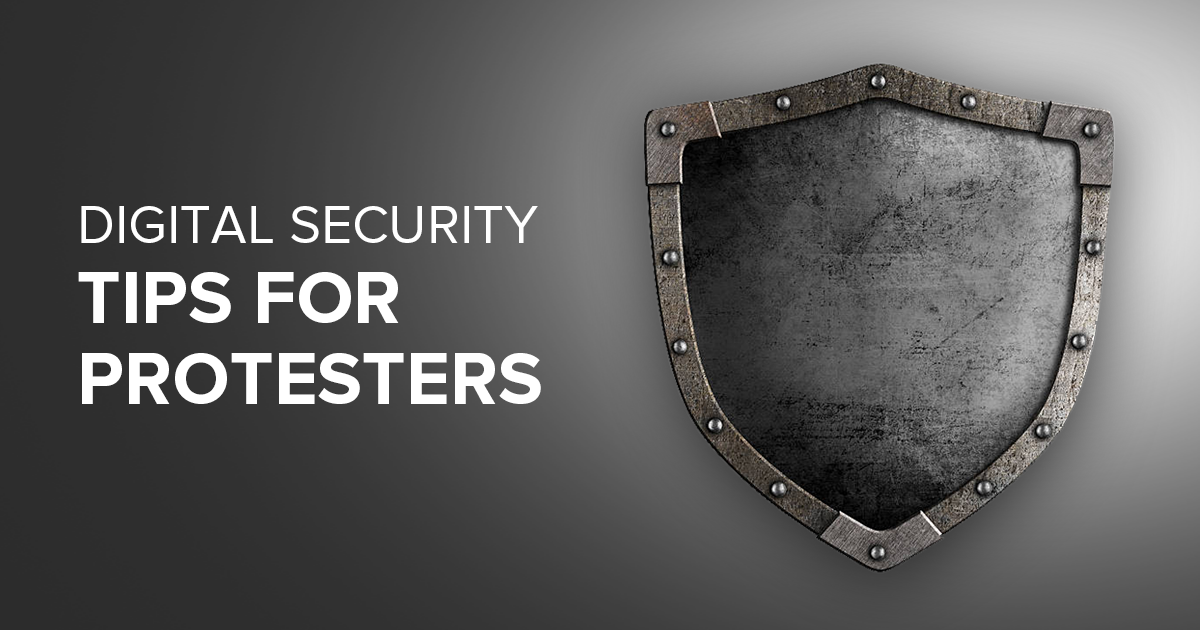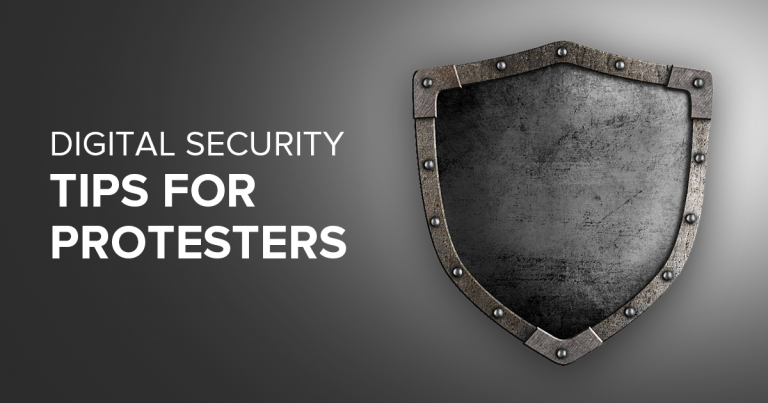
7 Best Digital Security Tips for Protesting in July 2023
The protests against Police Brutality are turning from USA-centric to a worldwide phenomena. And unfortunately, being countered by more excessive violence from law enforcement agencies. Peaceful or not - you’re not safe: Police forces perform mass arrests, and use advanced tools to track you down using your own phone.
This guide will teach you how to practice your First Amendment rights, without the fear of being monitored and terrorized through government surveillance.
If you support peaceful protests and plan to hold one, here are some tips to keep yourself and your data safe:
1. Remove biometric features from your phone
If you use your fingerprint to unlock your smartphone, you might want to switch to a PIN or a password (here are some tips on how to create an ironclad password). While fingerprint scanning is convenient, it can be used against you. If you take part in a protest, the police can force you to unlock the phone with your fingerprint.However, the police cannot force you to give the phone password if they don’t have a warrant.
Also, despite all the assurance provided by phone companies that they will not collect fingerprint data, hackers can still break into their system. They can use this data to steal your identity and engage in criminal activity.
Face recognition poses similar security concerns. Police have the right to ask you to use face recognition to unlock your phone during a protest. They may also be able to forcibly unlock your device against your will.
2. Use a VPN
This tool will obfuscate your online activity, so you can’t be tracked through it. It works: In August 2017, the US government tried to unmask everyone who visited an anti-Trump website. The website disruptj20.org was hosted on DreamHost and the latter was approached by the federal agencies to get the IP addresses and other details of its visitors.
However, DreamHost contested the warrant issued by the government to obtain all the details of the users, which created a public uproar. The warrant was withdrawn later.When the US government asked DreamHost to turn over the details of the visitors to disruptj20.org, the hosting company denied. If they had turned over the details to the government, the details of hundreds of people would have fallen in the hands of surveillance agencies.
Imagine if such an event occurs again and the company surrenders all the demanded details? Your IP can be traced back to your geographical location, and your actions can be observed - all as a result of your visit to a particular website.
If you want to stay safe, it’s best to hide your IP address. You can hide behind another IP address with the help of a VPN. A virtual private network will assign you a different IP when you browse the internet. You can check your IP address using this tool.
The hosting company and even your ISP cannot detect the real IP behind the fake one provided by the VPN. Using a VPN will also keep you safe from hackers because the virtual network encrypts the data when it leaves your computer.
3. Encrypt the storage of your device
Encryption protects the data on your phone and other devices. You can get full-disk encryption to ensure that each file on your storage is secured. When you use a VPN, the data that is sent and received by your computer is encrypted.With storage encryption, you can encrypt the data that is stored on your device. When you encrypt your disk, all your photos, videos, text messages, and browser passwords get encrypted.
If police confiscate your encrypted phone, they will not be able to read your personal files and see your photos.
Apart from that, there are chances of losing your phone in a protest. This means that all of your data could wind up in the wrong hands. Fortunately, all Android devices running Lollipop and above and all iPhones since 5s can be encrypted.
Even if you have encrypted your device, be sure to use a strong password of about 10-12 random characters. A strong password is needed because encryptions can sometimes be decrypted using brute force attacks.
You can create highly secure passwords using this tool.
4. Carry a clean phone
If your phone is confiscated by the police, they can scan through your texts, photos, videos, and apps. To make sure your data is secure even if your device is confiscated, use a clean phone, or burner phone.
It’s a good idea to purchase an inexpensive pay-as-you-go phone and pay for refill time with cash. Leave your smartphone at home during your protest. Also, if you lose the burner phone or it is taken away, it won’t be a huge financial loss. Also, keep the location services turned off. Once you have used the phone and don’t need it anymore, it can be recycled safely
5. Turn on airplane mode
Once you have coordinated with your friends and have met each other, you will probably not need to message them. When you’re all together, put the phone in airplane mode. This way, your device will stop transmitting while you protest. Decide on a spot where you can meet up if your friends get separated.
6. Don’t bring a phone
The reality is that you really don’t need a phone during a protest. If you’re meeting your friends, there’s no need to text or Facebook them.
You can discuss a meeting spot with your friends early on and assemble there. Communication is not as comfortable, but still possible when you leave your phone at home.
7. Leave social media out of the picture
If you plan to organize a protest, it’s a good idea to look beyond Facebook and Twitter.
While these social media platforms will give you a lot of exposure, they also come with their own set of risks. Law enforcement agencies can easily view the event page, comment on it, and keep a check on everyone commenting on it.
Protesting on the streets to make your voice heard is your fundamental right. But since the government has the power to crack down on peaceful protests as well, it’s important to keep your safety and digital security in mind.


